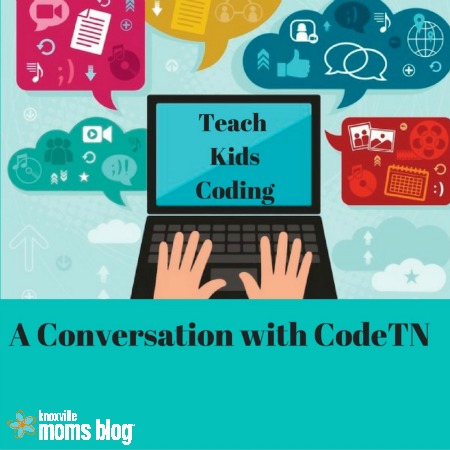For families with pre-teens and high school students, coding is becoming popular. Coding is a not a craze or a fad though. It is no longer geeky, foreign, and just for the elite. In my opinion, coding should be a second language for future generations and cross gender and socioeconomic boundaries. As I watch my toddler swipe through iPad learning apps, I find myself wondering: What will his future be like? What will he be when he grows up? Coding is a way for future generations to be leaders in the workforce.
I have a Master’s Degree in Social Work and started out with a Bachelor of Arts in Literature. If you would have asked me twenty years ago what I wanted to be when I grew up, I would not have said anything remotely related to technology. Here I am though on a steep learning curve in the digital age with a job that is primarily focused on data extraction and analysis to benefit those in need. Although I am not versed in coding, I come in contact with it daily.
At this point in your read, you may be asking, “What is ‘coding’?” Coding is what makes it possible for us to create computer software, apps and websites. In fact, somebody used coding to make this website happen. It is the language our devices use to speak to each other. Coding can look like this: SELECT Name FROM Contributors WHERE Name <> ‘Lisa’
Recently I was talking to a friend, Caleb Fristoe, about children and technology. Specifically, how important it is to introduce kids at an early age to technology and immerse them in the language (check out this read about girls and coding). I was particularly struck by a statistic I saw on jobs and coding from code.org:
Caleb told me about CodeTN, which teaches high school and middle school kids how to code right here in Knoxville! I asked Caleb a few questions to elaborate on what coding is, why it is cool for kids, and how kids can get involved. Following is our convo:
Question: What is CodeTN?
CDTN: CodeTN is a joint venture between The Great Schools Partnership and The United Way of Greater Knoxville. Our vision is to promote computer programming, as well as a wide variety of related activities to local high school, and soon, middle school students.
Q: So why do we need something like this in Tennessee?
CDTN: Great question. At CodeTN, we really see the IT (Information Technology) sector as the “blue collar” jobs of the future; and in terms of America’s preparedness – and Tennessee, in particular – we are sorely under-prepared. I think the Bureau of Labor and Code.org data really speaks volumes:
- Nationally only 12% of computer science jobs are held by women and even fewer than that are held by persons of color
- There are 7,043 open computing jobs in TN
- There are only 515 college level computer science graduates in TN annually
- Only 30 schools teach computer science in TN
- There are no clear computer science teacher certification pathways (this will be our major push next year)
Q: So, what exactly happens with CodeTN? How does the program work to address the problems above?
CDTN: It’s basically made up of three elements: the teacher, the student, and what we call the tech pro or professional.
- The teacher is there to provide support to the student and help them feel comfortable with the tech pro.
- The tech pro is there to help the student connect with the technology, as well as to guide them through troubleshooting any problems they may run into.
- The student is provided the opportunity to work in a project-based environment with their peers and with a supervisor of sorts, the tech pro, and hopefully get a taste of real world project management, teamwork, and problem-solving.
All three of the participants are essentially one big team looking to create a dynamic and responsive web application (a fancy way to say website) that looks to solve a problem that we hope comes from the students themselves.
Q: Can you give me an example?
CDTN: Sure, last year the top three apps were:
- A scholarship search engine
- A website to track and recommend immunizations for global travel
- An application to calculate the cost and efficiency of putting solar panels on top of your school
Q: What is the response of kids who participate? How do you keep them interested and challenged? Were there any prizes involved?
CDTN: The level of adaptability and willingness to learn among the students was really amazing to witness. We had participants that had never touched code in their life, stepping up to lead design teams and ultimately create competitive, meaningful applications. I was proud of every student that decided to take the plunge. And regarding prizes, we gave $5000 to the winning classroom, $2500 to the second place classroom, and $500 and $250 to each of the students of the respective teams.
Q: So if a mom or dad knows their kid may like gaming or technology and they want to get more information, what can they do?
CDTN: This video explains what we do. They can also go to www.codetn.org and sign up for our newsletter, follow us on Twitter (@Code_TN), Instagram (@codetn) and Facebook for updates, and ask their school to start a team! Right now we have over 100 students participating from three counties in 12 schools: Central, Austin East, Bearden, Hardin Valley, Farragut, Oak Ridge, Maryville, Heritage, West, and even a few middle schools are all involved. It’s free to join and start a team.
Q: So when is this year’s competition?
CDTN: It’s just around the corner on November 19th, 2015, 7pm, at the Knoxville Convention Center, and all your readers and families are invited to come out and see what our students have put together. The Knoxville Entrepreneurs Center has graciously agreed to let us tag along on their Start Up Day activities, so it’ll be one great big celebration.
Q: That sounds dynamic and is so soon. What’s after the competition?
CDTN: After the competition, we’re working on Code.org’s Hour of Code December 7th-13th, and this is where we will begin getting middle schoolers engaged. It’s going to be a great time. It’s a part of a larger national push to get a wider set of students involved in computer science by sitting down for an hour and writing a simple program. You can find out more at: https://hourofcode.com/us.
KMB readers who are interested in an event at their school can email [email protected] to get set up.





















